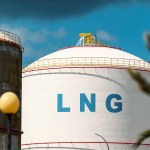“We still want to own car carriers. However, considering issues such as European tariff problems and the sense of stagnation in electric vehicle (EV) demand, it is difficult to say that this type of vessel will remain secure in the future.”
EV Market Slowdown
At a shipowner study group held in Western Japan, a car carrier owner expressed concerns about future business developments during the networking session.
The car carrier business is currently performing well. Even before the COVID-19 pandemic spread in 2020, the balance of supply and demand for car carriers had already been disrupted, and new shipbuilding orders came to a halt.
Car carriers are specialized vessels that, in principle, can only transport finished vehicles. Globally, the number of car carriers in operation is limited to 800.
As such, the car carrier business has historically been swayed by movements in finished vehicle exports, particularly from Japan and Asia to the U.S. and Europe.
A senior executive of a major shipping company explained:
“There was a time when 6 million finished vehicles were exported from Japan annually. During that period, even reefer container ships were deployed to meet the demand. However, new ships ordered at that time were delivered three years later, and by then, Japan’s annual export volume had dropped to 4 million units, forcing significant fleet reductions.”
Currently, one area of concern is the European Union’s introduction of additional tariffs on Chinese-made EVs in November. For car carriers, many of which are currently taking longer routes due to the Suez Canal blockade, the future of Chinese EV exports is a cause for concern.
Over the next five years, the EU will impose an additional tariff of 7.8%–35.3% on top of the existing 10%, with a maximum rate of 45.3%. Germany supported the measure due to its high dependence on China for its domestic automobile industry, while France opposed it.
Another Japanese shipowner shared their thoughts:
“Currently, 212 car carriers are on order globally, representing 35% of the capacity of the existing fleet of 800 vessels. It would be good if the slump in EV sales leads to increased demand for transporting hybrid vehicles, but it’s not that simple. While many car carriers operate under long-term charters with operators, managing these vessels is challenging. Honestly, I am considering whether to continue owning car carriers in the future.”
Meanwhile, major European operators have placed successive orders for LNG-fueled ultra-large car carriers with a capacity of 9,000–10,000 vehicles from Chinese shipyards. Some of these vessels have already been delivered, but it appears the current decline in EV demand was not accounted for. Where will the stranded Chinese-made EVs go from here? It is clear that Europe and the U.S. are unlikely destinations.
The 10% Order Backlog Constraint
A Greek shipowner visiting Japan to speak at a conference expressed a strong outlook:
“The bulk carrier market will remain steady next year. The order backlog for newbuilds accounts for only 10% of the capacity of the entire operating fleet. This level of supply pressure from newbuilds is manageable.”
The forecast for a steady bulk carrier market—
Is this prediction accurate? Is there no room for dissent?
Signs of changes in the bulk carrier market are emerging.
Since mid-November, the Panamax market has been hovering around $8,000 per day, falling below the breakeven point of $12,000. Capesize and Handysize markets are barely covering their breakeven points, at $20,000 and $12,000 per day, respectively.
A maritime broker remarked:
“It is true that the backlog of orders for newbuilds is relatively small compared to the existing fleet. Chinese shipyards are focusing on high-value-added vessels such as large container ships and LNG carriers. However, pay attention to the current newbuilding prices. According to Clarksons Research, the price of a Capesize newbuilding as of November is $76 million, up by more than $10 million from $60.5 million in 2021. To match these costs, charter rates would need to be around $30,000 per day.”
Signs of overcapacity in Chinese shipyards are already apparent in the LNG carrier market. The demand for LNG carriers increased due to rising global natural gas demand and reduced exports of Russian gas to Europe.
Currently, the dominant LNG carriers with tank capacities of 150,000–180,000 cubic meters have a global fleet of 439 vessels, with 295 on order—representing 69% of the existing fleet’s capacity. Spot charter rates for LNG carriers have plummeted to around $20,000 per day, compared to the breakeven point of $80,000–$90,000 per day.
An energy analyst added:
“The U.S. has also imposed economic sanctions on Gazprombank, the financial arm of Russia’s state-owned Gazprom. Over the past three years, geopolitical risks have been favorable for shipping, but it is uncertain how the wind will shift in the future. One key factor remains the production capacity of Chinese shipyards.”
Both the car carrier and bulk carrier markets face challenges as they navigate these shifting global dynamics.
Source: The Japan Maritime Daily






